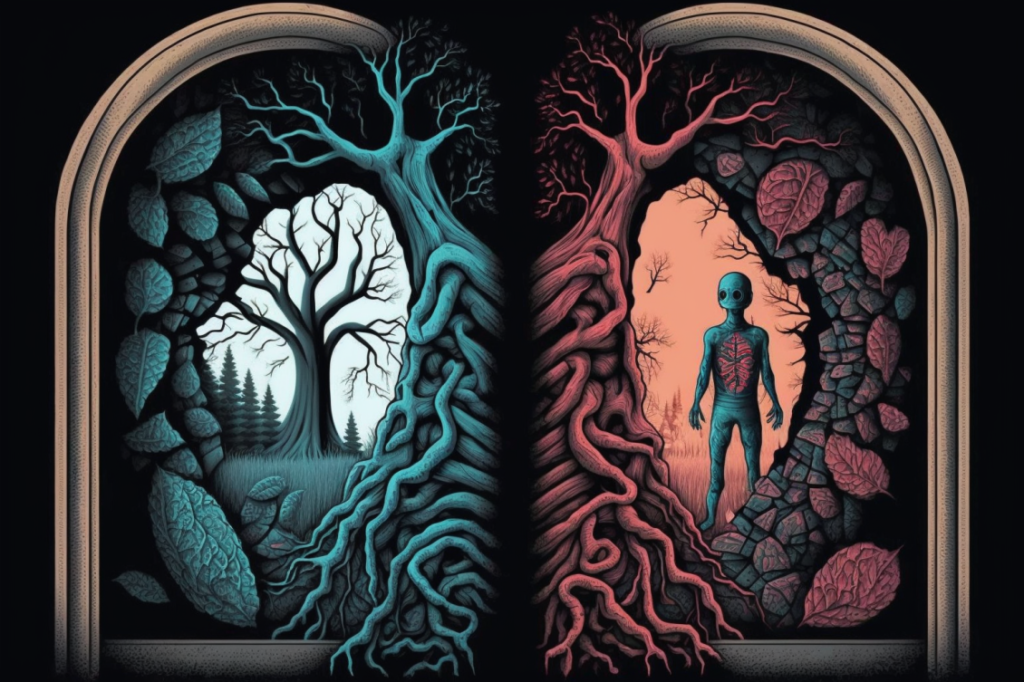
Intro:
In the unending quest to understand the human condition, few topics are as fascinating as the science of love. This article aims to unravel the mysteries surrounding this potent emotion that has captivated humans for centuries.
The Biochemistry of Love
The biochemistry of love is an intricate and fascinating process that involves a series of chemical reactions in our brain. When we fall in love, our body releases a cocktail of hormones, including dopamine, oxytocin, and vasopressin, creating a mix of emotions that range from excitement to contentment. These hormones are responsible for the feelings of happiness, warmth, and closeness we feel when we’re in love. They also influence our behavior, making us more caring, affectionate, and protective towards our partner. This complex interplay of hormones and emotions is what fuels the powerful and often overwhelming feelings of love.
Love, it turns out, is a potent cocktail of chemicals. The body’s response to attraction, attachment, and long-term commitment is largely governed by biochemical reactions involving several key hormones and neurotransmitters.
The Role of Oxytocin
Oxytocin, often referred to as the ‘love hormone‘, plays a crucial role in forging and maintaining the bond between individuals. It’s released during hugging, kissing, and other forms of physical intimacy, promoting feelings of trust, empathy, and connection(More about oxytocin). It also plays a significant role in mother-child bonding and is released during childbirth and breastfeeding. This hormone creates a sense of security and attachment, acting as the glue that holds relationships together over time.
Dopamine and Infatuation
Dopamine, a neurotransmitter, is heavily involved in the infatuation stage of love – the intense, euphoric stage where we can think of nothing else but our beloved. It’s responsible for the ‘high‘ we feel during the initial stages of a relationship. This dopamine rush is similar to the one triggered by addictive substances, explaining why love can be so intoxicating and why the end of a relationship can feel like a withdrawal. More on dopamine and love.
Vasopressin and Long-term Commitment
Vasopressin, another hormone, plays a significant role in long-term commitment, often dubbed the ‘monogamy hormone.’ This hormone is associated with behaviors linked to relationships, such as bonding and territoriality. The fascinating part about vasopressin is that its release is triggered by everyday activities in a long-term relationship, like spending quality time together, cuddling, and even making eye contact. These simple yet meaningful interactions reinforce the bond between partners, making the relationship more robust and resilient to challenges.
Serotonin and Obsessive Thoughts
Serotonin levels also fluctuate when we fall in love. In the early stages of a relationship, serotonin levels drop, leading to obsessive thoughts about the loved one, a condition often compared to Obsessive-Compulsive Disorder (OCD). As the relationship matures, serotonin levels gradually normalize, but this period of obsession can be a roller-coaster ride of emotions. It’s during this time that we think constantly about our partner, idealize their qualities, and crave their presence – the quintessential “honeymoon phase.”
The Evolutionary Purpose of Love
From an evolutionary perspective, love serves several important purposes. It encourages pair bonding, which facilitates cooperation in raising offspring and increases their chances of survival. Love also drives us to seek out and choose suitable mates, ensuring the propagation of our genes. Furthermore, the emotional connection fostered by love promotes social cohesion, increasing the survival chances of the group as a whole.
Mate Selection and Survival
The choice of a mate is a critical aspect of survival for many species, including humans. Factors such as genetic compatibility, health, and resource availability often influence mate selection. Love, with its ability to forge strong emotional connections, plays a vital role in this process. It guides us towards partners who are likely to be good mates, facilitating reproductive success and the survival of our species.
The Impact of Love on Reproduction
Love has a profound impact on reproduction. The emotional bond between partners can encourage the decision to have children, and the ongoing love relationship provides a supportive environment for raising them. Love also influences sexual activity, which directly affects reproduction. Moreover, the hormones associated with love can have physical effects, such as reducing stress and boosting immune function, potentially enhancing fertility.
Love and Genetic Diversity
Another evolutionary purpose of love could be to increase genetic diversity. By choosing partners who are genetically different from ourselves, we increase the chances of our offspring inheriting a broader range of genes, potentially giving them a survival advantage. This is known as “heterosis” or “hybrid vigor,” where the offspring show improved or superior qualities due to their diverse genetic makeup.
Role of Love in Social Cohesion
Love also promotes social cohesion. The emotions associated with love encourage social bonding, cooperation, and altruistic behaviors, contributing to the survival of human communities. It’s through these emotional bonds that societies are able to work together effectively, be it for collective defense, resource sharing, or raising the next generation.

The Psychological Aspects of Love
Love isn’t just a biochemical reaction or evolutionary tool. It’s also a complex psychological phenomenon with profound effects on our minds and behaviors.
Sternberg’s Triangular Theory of Love
Psychologist Robert Sternberg’s Triangular Theory of Love proposes that love comprises three components: intimacy, passion, and commitment. Intimacy refers to feelings of closeness and connectedness; passion involves physical attraction and romance; and commitment represents the decision to maintain the relationship. The type and strength of love one experiences depend on the balance of these three components.
Attachment Styles in Relationships
Our early experiences with caregivers often shape our attachment style in relationships – how we relate to others and what we expect from our relationships. There are four main attachment styles: secure, anxious-preoccupied, dismissive-avoidant, and fearful-avoidant. Understanding our attachment style can provide insight into our behavior in relationships and how we give and receive love.
Love and Mental Health
Love can have significant impacts on mental health. Healthy, loving relationships can promote mental well-being, while toxic or unrequited love can lead to stress, anxiety, and depression. It’s important to note that the quality of love we experience is as crucial, if not more, than the mere presence of it. Love in its best form is supportive, nurturing, and empowering, contributing to our overall mental and emotional wellbeing.
The Influence of Love on Behavior
Love can profoundly influence our behaviors. From acts of grandeur to small daily sacrifices, love often drives us to act in ways that prioritize our loved one’s well-being, sometimes even above our own. These acts of love, large and small, are the threads that weave together the tapestry of a relationship, strengthening the bond between partners and creating a shared history of experiences and memories.
The Cultural Influences on Love
Love is a universal emotion, but its expression varies across cultures. For instance, in some cultures, love is seen as a necessary foundation for marriage, while in others, love is expected to develop after marriage. Some cultures value passionate, romantic love, while others place greater emphasis on companionate love, marked by deep affection and long-term commitment.
Variations of Love Across Cultures
Different cultures have unique words and concepts for love, reflecting diverse understandings and experiences of this complex emotion. For example, the Ancient Greeks had four words for different types of love: eros (romantic love), philia (friendship), storge (familial love), and agape (unconditional love).
The Impact of Society on Love Expressions
Society plays a significant role in shaping our expressions of love. Societal norms and expectations often dictate how openly and freely we can express our love. For instance, public displays of affection may be widely accepted in some societies, but frowned upon in others. Moreover, societal changes, such as the rise of social media, are continually reshaping our expressions of love and how we navigate love relationships.
Love in Literature and Media
Cultural expressions of love are often seen in literature and media. From epic love stories to heartbreaking tales of loss, these narratives shape our understanding of what love is and what it can be. These stories not only reflect our cultural notions of love but also help shape them, influencing our perceptions and expectations of love.
Changing Cultural Norms Around Love
Cultural norms around love have evolved over time. From arranged marriages to online dating, societal changes have continuously reshaped our experiences and expressions of love. As we move forward, it’s likely that our concepts and experiences of love will continue to evolve, influenced by technological advancements, changing societal norms, and shifts in our understanding of love itself.
FAQ: Common Questions About the Science of Love
What chemicals are involved in love?
Several key chemicals are involved in love, including oxytocin, dopamine, vasopressin, and serotonin.
Why do we fall in love?
We fall in love due to a combination of biochemical reactions, evolutionary drives, psychological factors, and cultural influences.
How does love affect the brain?
Love affects the brain by stimulating certain areas such as the ventral tegmental area and the caudate nucleus, and by releasing specific hormones and neurotransmitters.
Can love be scientifically measured?
While we can measure related phenomena such as the presence of certain hormones or brain activity, the subjective experience of love is challenging to measure scientifically.
Does love have a purpose from an evolutionary perspective?
Yes, love serves important evolutionary purposes, including mate selection, reproduction, and cooperative child-rearing.
Conclusion: The Everlasting Quest to Understand Love
The science of love is a rich and complex field, intertwining biochemistry, psychology, evolution, and culture. As we continue to explore the vast depths of this potent emotion, we gain deeper insights into the human experience and our profound capacity for love and connection.
Key Takeaways
- Love involves complex biochemistry, including key hormones and neurotransmitters like oxytocin and dopamine.
- From an evolutionary standpoint, love influences mate selection and facilitates long-term partnerships for child-rearing.
- Psychological aspects of love involve theories of love and attachment styles.
- Cultural context profoundly shapes the understanding and expression of love.
Explore the science of love and discover how this powerful emotion shapes our lives in profound and beautiful ways.





